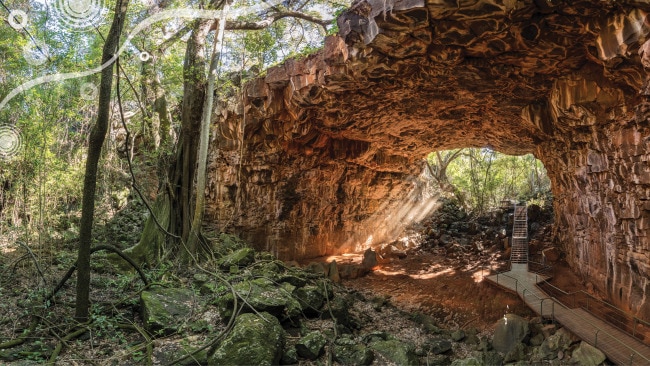Inside Australia’s obsession with home ownership
Experts say the great Australian dream is about to change forever.

Experts say the great Australian dream is about to change forever.
Just over half of Australian retirees are projected to own their own homes by 2056. That’s according to research from the Grattan Institute, a Melbourne-based think-tank dedicated to public policy.
Over time, the ‘great Australian dream’ has meant different things to different people. But for the better part of a century, any reference to Australian aspirations — great or otherwise — has meant owning a home. In fact, an Australian National University poll conducted in 2017 revealed that 75 per cent of people believe that owning a home is part of the Australian way of life.
However, as the Grattan Institute figures suggest, things change.
“Home ownership is falling very fast among the young and the poor. Go back three decades, and someone’s chance of owning a home was roughly the same regardless of what their income was. Now, it’s really steeply graded by income,” Grattan Institute fellow Brendan Coates tells News Corp.
“The big change is that house prices have risen much faster than incomes. A few decades ago, the average house was only two or three times the average income. Now it’s up to 10 times the average income, at least in Sydney. It’s much harder for young Australians to buy a house, and it now takes up to 10 years just to save a deposit.”
What would it really take to lower prices?
Australia’s political and economic climate have played a huge part in this.
We saw first-home grants come in under the Howard Coalition Government and get expanded under the Rudd Labor Government. At the recent federal election, both parties promised a new first-home buyer scheme that will require new buyers to save a deposit of just five per cent.
Coates argues all it does it drive demand higher.
“Successive Australian governments, on both sides, have been unwilling to level with the Australian people on what it’s going to take to make housing more affordable,” he says.
“There have always been more homeowners than renters in Australia. That’s largely why housing policy reflects the interests of people who already own their homes, and their interest is not to see house prices fall, but if you want to keep the dream alive in Australia, then someone has to pay.”
There are ways houses could be made more affordable, but Coates says these methods are “political poison”. For example, changing planning rules to allow more development in inner and middle city suburbs would make housing cheaper by adding to supply.
Meanwhile, restructuring tax advantages like negative gearing or capital gains tax discounts so real estate becomes a less attractive investment option, or slowing migration would reduce demand.
However, for obvious reasons, none of these options are palatable to voters.
Planning for increasing numbers of renters
Australians have had a keen interest in nabbing land ever since the First Fleet arrived in 1788, displacing the traditional owners. The first governor, Arthur Philip, assumed the British Government owned all the land in the newfound colony, but free settlers and freed convicts quickly started staking out their patches.
By 1825, when Ralph Darling became governor, a more orderly system was implemented, which formed the basis of the systematic freehold land system we have today.
However, the next few decades will see a significant rise in the number of people looking to rent. According to Natasha Dickins, a DIY specialist and professional renovator, larger numbers of renters means the quality of homes put up for rent will need to improve significantly.
“Even though lots of Australians are already renting, I think our standards need to improve a lot. I think pushing back on landlords and real estate agents is important,” she tells News Corp.
Dickins says at the very minimum, the first thing landlords should do is to make sure that the property is fully sealed, that the roof is solid and the fly screens are intact, and that everything functions. After that, she says simple changes can make a huge difference.
“Taps don’t have to be trendy, but they have to work. Painting a couple of walls white can transform a living space and improve the wellbeing of the people living there. It doesn’t take much,” she says, adding it’s really important that you hire trusted, licenced tradies.
“If you find someone you can work with who is transparent with their costs, you’ll be surprised how much you can get done around the house without breaking the bank.”
Expect our cities to grow upwards and outwards
Kosta Drakopoulos is the director of Drakk Pty Ltd, a Melbourne-based developer with an annual turnover of about $80 million, which specialises in the commercial and multi-level apartment sectors.
“It has been an up-and-down market this year, to say the least. There has been way too much pressure applied on property from banks and the potential shift in government and policies did see an immediate cool-off,” he says.
“As a developer, we noticed that the investors basically disappeared with the change in lending requirements and our apartment design changed substantially to cater for the family – [there are] more three-bedroom apartments on the market today than ever before.”
Drakopoulos adds that while there has been a slight decrease in home prices of late, they are still out of reach for many. As such, apartment-style living is now a reality for many families and an option increasing numbers of first-time buyers are considering. However, the dream of a home with a backyard is still alive.
“People don’t necessarily want to get caught up in city living. The outskirts are very attractive these days. School catchment areas, transport and parking can be a big factor when choosing where to live. I can expect growth to continue [in the] outer city. Not only for practicality, but affordability [too].”
Originally published as Inside Australia’s obsession with home ownership



